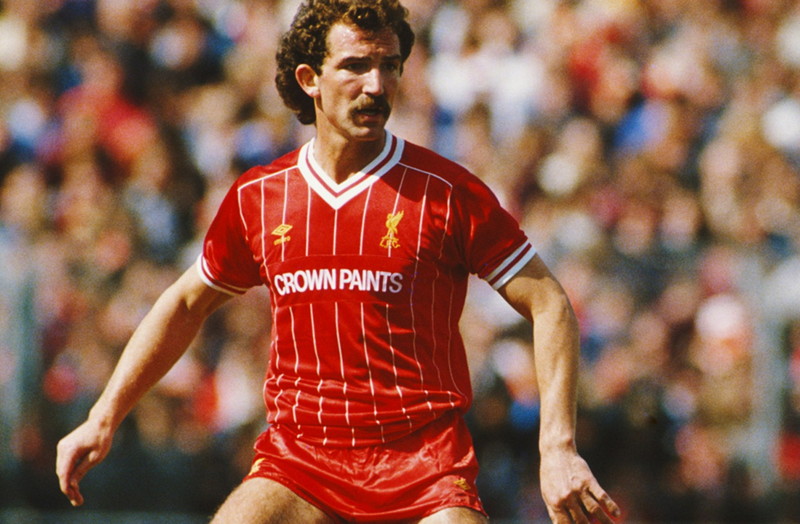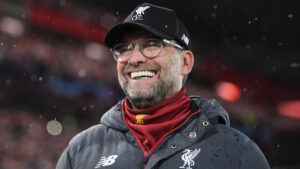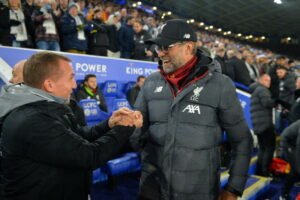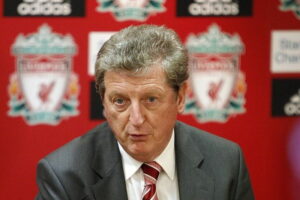
When it comes to thinking about Graeme Souness and his relationship with Liverpool Football Club, it is best to think of him as two different people. Souness the player was one of the best midfielders that the club ever had, being combative and strong in the challenge, always happy to defend his teammates and let the opposition know that they were in a game. As a manager, he tried to do too much too quickly and then almost destroyed his reputation entirely by doing an interview with a newspaper that is banned across Merseyside and we won’t even mention the name of.
Having been Liverpool captain during one of the club’s most successful ever periods, Souness left to join Sampdoria before finishing his career at Rangers, the club at which he began his managerial career. He would also manage clubs like Galatasaray and Southampton, but his biggest resurgence came when he began a media career and worked regularly for Sky Sports. His no-holds barred personality carried over into his time on television, often saying things that were controversial. He also worked hard to improve himself as a person, learning from others about issues he didn’t know much about.
The Early Years
Graeme James Souness was born in Edinburgh on the sixth of May 1953. Brought up in the Saughton Mains area of the city, he supported both Hearts and Rangers as a youngster. As a teen, he played for North Merchiston, a local boys’ club, beginning his professional career as an apprentice at Tottenham Hotspur under the management of Bill Nicholson. He signed professional forms when he was just 15-years-old, but he made just one senior appearance for the club. In the summer of 1972, he gained some playing time at the Montreal Olympique in the North American Soccer League.
Boro’s Graeme Souness having a ‘difference of opinions’ with Liverpool’s Jimmy Case in 1977 🔴⚪️ pic.twitter.com/GADRaijmsH
— Boro Memories (@boro_memories) November 27, 2023
Having played in ten of the 14 matches that the club played, Souness was named in the All-Star Team that season, which might well have been something that caught the eye of Middlesbrough. He was sold to the northern club for £30,000, making his first appearance for ‘Boro in the January of 1973. He didn’t score his first goal for them until the December, helping Middlesbrough to defeat Preston North End 3-0 at Ayresome Park. He began to gain appreciation thanks to his tenacious, combative style of play, learning from Bobby Murdoch after Jack Charlton had become Middlesbrough manager and signed him.
Signing for Liverpool
Middlesbrough won the Second Division at the end of the 1973-1974 season, with Souness scoring a hat-trick in the club’s final game of the season against Sheffield Wednesday, a game that ‘Boro won 8-0. In 1978, having impressed for Middlesbrough in the first division, Bob Paisley paid £350,000 to sign the Scot on the tenth of January, bringing him alongside fellow Scots Alan Hansen and Kenny Dalglish. His departure from Middlesbrough was somewhat acrimonious, but he made his Liverpool debut on the 14th of January during a 1-0 win over West Bromwich Albion.
On the 25th of February, Souness endeared himself to the Liverpool fans by scoring a volley from just inside the box against Manchester United as part of a 3-1 win. Having won the European Cup the year before, Liverpool were looking to retain the trophy in 1978 and Souness played an important part in helping them do so. He played a pass that split the FC Bruges’ defence, allowing Kenny Dalglish to get on the end of it and score the only goal of the game. It was the beginning of a period of sustained success for the Reds, with Souness winning his first title with the club the following season.
Becoming the Captain
Liverpool retained the league in 1979-1980, with another European Cup following in 1981 when they beat Read Madrid 1-0. Souness had scored a hat-trick in the quarter-final against CSKA Sofia, proving that he was a crucial part of an all-conquering team. Having made some errors during the previous season and arguing with Bob Paisley during a match at Villa Park, Phil Thompson was dismayed to see the captaincy taken off him and given to Souness for the 1981-1982 campaign. Initially the Scouser refused to speak to the Scot, believing that he’d ‘stolen the captaincy’ from him.
Graeme Souness – A man very confident in his own skin. pic.twitter.com/b6swiuqtgA
— Fussball Geekz (@fussballgeekz) November 25, 2023
Under the work of Souness as captain, Liverpool added another league title as well as the League Cup, defending them both the following season. It was Bob Paisley’s last season in charge, so when they defeated Manchester United in the League Cup final in 1983, Souness insisted that the manager lift the trophy in his place.
There was a treble to be celebrated at the end of Joe Fagan’s first season in charge, with Liverpool winning the First Division, the League Cup and the European Cup. The League Cup victory came over Everton in the first ever all-Merseyside cup final.
Leaving Liverpool
The 1983-1984 season was to be Souness’ last at Liverpool. He left to join Sampdoria for £650,000, joining Trevor Francis at the Genoa-based side. The players that he joined included the likes of Roberto Mancini, Gianluca Vialli and Pietro Vierchowod. He helped the side win the Coppa Italia in his first season, defeating Milan 3-1 on aggregate in the final and handing the club the trophy for the first time in its existence. With his career coming to an end, Souness chose to leave Italy in 1986 in order to become the player-manager of his boyhood club, Rangers.
“That is certainly a booking”
You don’t say. Rangers player-manager Graeme Souness in action.
pic.twitter.com/EyoXwxSjuH— When Football Was Better (@FootballInT80s) July 10, 2023
During his fast match in Scotland, Souness was sent off within 34 minutes for being shown two yellow cards. Having faced disciplinary issues throughout his career, the Scot faced even more during his twilight years. In total he ended up making 73 appearance for the Scottish club, of which 50 were in the league. As the manager, he brought himself on for the last 20 minutes of the 1989-1990 season, which was a 2-0 win win over Dunfermline Athletic at Ibrox. In 1991, aged 38, Souness decided that it was time to draw his playing career to a close, having won almost everything there was to win.
Souness the International
Souness’ first cap for Scotland came in 1974 whilst he was still a Middlesbrough player when he was involved in a 3-0 win over East Germany at Hampden Park. By the time he moved to Liverpool, he had achieved just six international caps, but the moved helped to increase his profile. As a result, he was selected by Ally McLeod for the World Cup in Argentina in 1978. Injury kept him out of the first two games, but he helped Scotland defeat the Netherlands 3-2 in the final group game. Sadly it was too little too late, with the Scots being knocked out on goal difference.
Graeme Souness seems happy to model for Scotland pic.twitter.com/Gq1J0tvVst
— Retro Football Network (@retrofootballnw) November 25, 2023
There were two more World Cups for Souness, with the first coming in Spain in 1982. This time he played all three group games, but couldn’t stop his country from being eliminated. He also played in the World Cup in 1986 in Mexico, at which point he was already the player-manager of Rangers. Having struggled with the altitude, Souness didn’t play well and Scotland lost to Denmark and West Germany. Caretaker manager Alex Ferguson left him out of the last group game against Uruguay. Across 12 years, Souness made 54 appearances for Scotland, scoring four times.
Entering Management Properly
As the manager of Rangers, Souness took advantage of the fact that English clubs were banned from Europe as a result of the Heysel Stadium Disaster and signed some big name players to Ibrox. The likes of Terry Butcher, Trevor Francis and Ray Wilkins all arrived in Scotland in the first few years of Souness’ time in charge, allowing the club to dominate Scottish football. They won the league and the League Cup in his first season in charge, retaining the League Cup the following season but missing out on the league title to Celtic. The club was in the process of winning its fourth league title in five seasons when Liverpool came calling.
The shock retirement of Kenny Dalglish meant that the Reds were left looking for a new manager and Souness seemed like a natural fit. Knowing the club inside out, the fact that he had been successful in Scotland meant that Liverpool were comfortable to appoint him in the role. Ronnie Moran had been put in temporary charge, but he wasn’t keen on taking the job permanently and instead wanted to work as a coach for Souness. He signed a five-year contract on the 16th of April 1991, leaving Rangers with just four more games to play before the season was over.
An Awkward Fit
Liverpool were looking likely to retain the title when Souness arrived, but defeat to Arsenal on the final day of the season meant that it was the Gunners that were crowned champions. The Scot decided that a major re-organisation of the squad was needed, bringing in Dean Saunders, Mark Wright, Rob Jones and Mark Walters, as well as promoting Steve McManaman to a regular place in the squad. He also gave Jamie Redknapp his debut, who had been signed as a teenager by Dalglish. On top of that, 17-year-old Robbie Fowler was also given his first progressional contract.
Liverpool 3-0 Norwich City
Graeme Souness returns to Anfield as manager in April 1991 with a comfortable win over the canaries.
I really thought we’d kick on and be very successful under Souness. 😬 pic.twitter.com/S2cPWtvmIC— Davolaa (@Davolaar) November 14, 2022
The problem for Souness was that many of the players still at the club had been there when he was a player. Having seen his behaviour during that time, they struggled to take him seriously when he tried to implement changes to the likes of the discipline within the side. He was also well ahead of his time, attempting to do the likes of get the players to eat and drink better, in a way that would later become commonplace for all teams. As a result, the players didn’t perform as well as he’d hoped on the pitch, seeing themselves in contention for just the FA Cup by the end of the 1991-1992 season.
Leaving Liverpool Again
In April of 1992, with the Reds gearing up for an FA Cup semi-final replay against Portsmouth, Graeme Souness went into hospital for major heart surgery. Whilst recovering he agreed to do an interview with a newspaper that wasn’t bought or sold in Liverpool due to its coverage of the Hillsborough Disaster. It should have gone out on the 14th of April, with a picture of Souness celebrating both Liverpool’s cup success and his own recovery from a big operation. Owing to the late-running of the match, however, it didn’t get printed until the 15th of April, the anniversary of Hillsborough.
A 1-0 defeat to Bristol City in the FA Cup 3rd round replay at Anfield on 25 January 1994 was the last time Graeme Souness led #LFC as a manager. Things had never really worked out for Graeme and Liverpool FC after his arrival in 1991 and that defeat seemed to be a final straw. pic.twitter.com/AryfFofroL
— LFChistory.net (@LFChistory) January 25, 2023
Many fans were furious about it, with apologies from Souness going largely unheard. There were calls for him to be sacked, in spite of Liverpool’s 2-0 win over Sunderland in the FA Cup final. The club underperformed in the 1992-1993 season, eventually finishing sixth. It meant that the Reds were not playing in Europe for the first time since 1963, excluding the years the club was banned in the aftermath of the Heysel Disaster.
The pressure continued to grow and more poor performances led to the Scot resigning his post towards the end of January 1994.
Life After Liverpool
Souness went without work for more than a year after leaving Liverpool but eventually took up the role as Galatasaray manager in the June of 1995. When the club won the Turkish Cup final on the 24th of April 1996, Souness planted a Galatasaray flag in the centre of the pitch of the club’s arch rivals Fenerbahçe, nearly causing a riot. He then went on to manage Southampton but resigned after one year, at which point he returned to Italy as the manager of Torino. He had no say in which managers would be bought or sold, leading to him lasting just four months before being sacked.
Boro’s Graeme Souness having a ‘difference of opinions’ with Liverpool’s Jimmy Case in 1977 🔴⚪️ pic.twitter.com/GADRaijmsH
— Boro Memories (@boro_memories) November 27, 2023
He then took on the managerial role at Benfica, leaving the club 18 months later, declaring the chairman to be ‘dangerous’. He ended up at Blackburn Rovers, winning the League Cup and finishing tenth in his first season, then sixth in his second. He left after they finished 15th in 2003-2004.
He took over as the Newcastle United manager, quickly falling out with a number of players. He lasted until the second of February 2006, at which point he was sacked. It was to be his last managerial appointment. He began a media career, working for Sky Sports for many years.
Graeme Souness’ Honours List
As Player:
- Football League Second Division: 1
- Football League First Division: 5
- Football League Cup: 4
- European Cup: 3
- Coppa Italia: 1
- Scottish Premier Division: 2
- Scottish League Cup: 3
As Manager:
- Scottish Premier Division: 3
- Scottish League Cup: 4
- FA Cup: 1
- League Cup: 1
- Turkish Cup: 1
- Turkish Super Cup: 1



